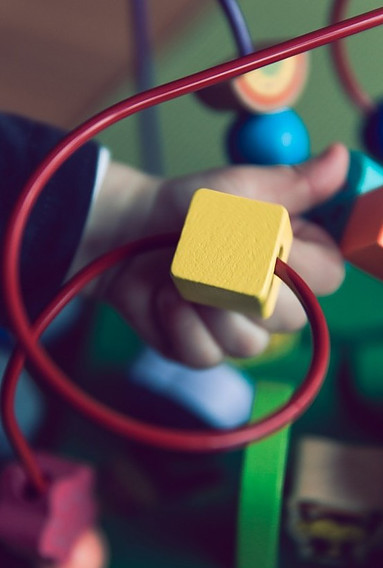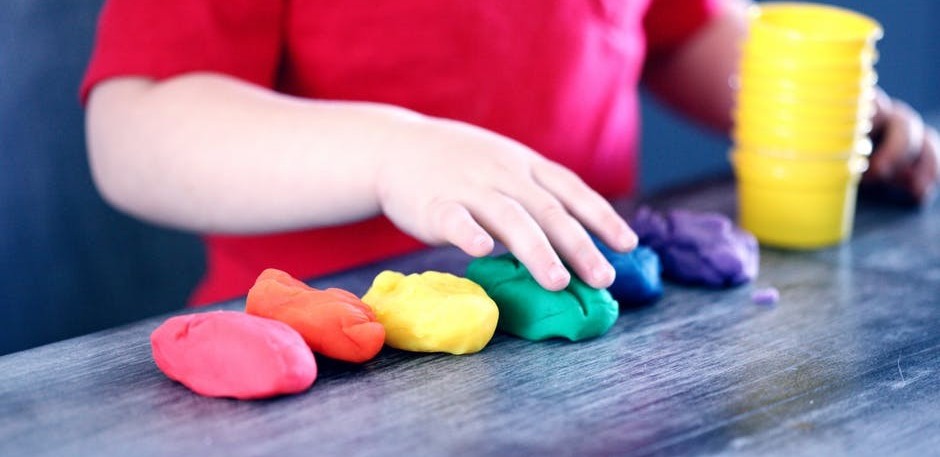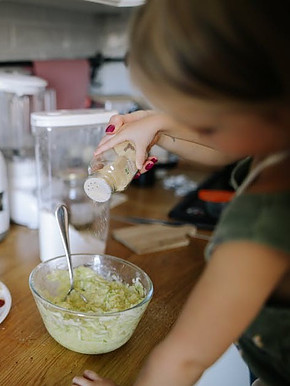 How to Improve Fine Motor Skills in Young Children
How to Improve Fine Motor Skills in Young Children
What are Fine Motor Skills? And how can we help improve fine motor skills in young children?
There are two types of motor skills: gross motor skills and fine motor skills. Gross motor skills involve the movement of the larger muscles group such as the legs and arms. Fine motor skills involve the movement of the smaller muscle groups such as the hand, wrist, and fingers.
In this section, we are going to look at what fine motor skills young children need to succeed. And we are going look at how to improve fine motor skill in young children, both in the school setting and at home.
What are Fine Motor Skills and Why are They Important
Fine motor skills are the child’s ability to move using their smaller muscle groups such as the hand, wrist, and fingers. Developing fine motor skills are essential for performing everyday activities.
Children use fine motor skills for everyday self-care such as fastening clothes, brushing teeth, using forks and spoons, and zipping up clothes. Fine motor skills are also important in the academic setting. Children use their fine motor skills to manipulate smaller objects, while using pencils to write or draw, and when they are using scissors and glue to cut-and-paste.
Through practicing of fine motor skills, the children will develop muscle memory. Muscle memory is developed when the repetition of an action allows that action to be performed almost automatically without much effort. For example, when a child starts to cut with scissors, they need to focus on opening and closing their hands to get the scissors to work. After getting plenty of opportunity to cut using scissors, the child will develop muscle memory for scissors, they will no longer have to focus on getting their hand to open and close to make the scissors work, it will become almost automatic.
Building Blocks of Fine Motor Skills
The building blocks are the skills that a child needs to build strong fine motor skills.
Crossing the Mid-Line: The ability to cross the imaginary line that divides the body’s left and right side. By crossing the mid-line, you are getting both the right and left side of the child’s brain to work together.
Bilateral Integration: The use of both hands together to perform a task. While cutting, one hand will be manipulating the scissors, while the other hand will be manipulating the paper. Both hands will need to work together to get the paper cut.
Hand Dominance: The preference to use one hand over the other when performing tasks.
Hand and Finger Strength: The ability to exert force against resistance using the hand and the fingers. When the children are building with Legos, they need to use their hand and fingers to snap the pieces together.
Hand and Eye Coordination: Information received from the eyes to guide and control the hand to help perform a task such as writing.
Finger Isolation: The ability to use the index finger in isolation. This would include pointing at objects and touching objects using just the index finger.
Pincer Grasp: The use of just the thumb and the index and middle fingers for manipulation. Children need to master the pincer grasp to effectively hold crayons and pencils.
Object Manipulation: The ability to skillfully manipulate objects such as crayons, pencils, and scissors.
These building blocks are not developed in isolation. Rather, they are used in unison with one another. When a child performs a task, the child will be using more than one of these building blocks to perform the task. For example, when a child is cutting paper using scissors, you will be able to see the different building blocks: crossing the mid-line, bilateral integration, hand dominance, hand and finger strength, hand and eye coordination, and object manipulation.
Activities to Develop Fine Motor Activities at School

There are many activities that you can do to promote fine motor activities at school. I’ve listed a few basic activities that can be adapted to any theme. When planning the fine motor activities you want to use, make sure that you are not teaching the activities in isolation. You want to make the learning meaningful. The best way to do this is to match your fine motor skills up to the theme that you are teaching.
Play dough/Silly Putty: There are a lot of different activities you can do with play dough to promote fine motor skills. Playing with play-dough will build hands strength. Have the children roll out, smooth, pat and pound down the play dough. Have them roll out play dough into a long snake and then pinch it into pieces. Hide small objects the children can hide in the play dough. Not only do they love to hide the objects, they also will build up their fine motor skills when they find the objects.
Finger Painting: Most people overlook finger painting because it is messy. But for kids and learning, the messier the better. There are different medians you can use to finger paint: paint, shaving cream, pudding to name a few.
Puzzles: Putting together simple puzzles will help your child learn about manipulating objects through turning, placing and flipping pieces.
Tweezers Games: Have the children move small objects using tweezers. By using tweezers, they are strengthening their muscles that are needed to hold and write with a pencil.
Foam Stickers: What child doesn’t love stickers. They’re fun, they come in a variety of styles and themes, and most importantly, they are cheap. Give the children some stickers and have them make cards for their friends. Write their name on paper and have them peel and place the stickers to make their name.
Building: Using a variety of different building blocks. The more resistance the building material the better. I have a lot of activities in my classroom with Legos. As the children are building with the Legos, they are building up their hand and finger strength.
Glue: Most teachers would prefer using a glue stick over liquid glue. I know glue sticks are less messy, but you are loosing some beneficial skills when you use glue sticks. Using glue bottles, the children have to squeeze the bottle to get the glue out. This will build us their hand strength. One activity I like to use with my children is have them tracing lines or their name with glitter glue.
Squirt Bottles: By using squirt bottles, children are strengthen their hands. If you have plants in the classroom, assign a classroom job of watering the plants. That person must water the plants daily by giving them a couple squirts of water. Have the children use markers to draw on coffee filters. After they are done drawing their picture, have them squirt water onto their pictures and watch the effect water has on their drawing.
Threading and Lacing: When a child does activities that require threading and lacing, they are building up their pincer grasp and their hand and eye coordination. The children can thread beads onto string to make necklaces. I like to use pipe cleaners and beads. I will have the children put the beads onto the matching color of pipe cleaner.
Activities to Develop Fine Motor Activities at Home
Here are some more activities that a child can do at home that will also promote fine motor skills. Keep in mind, any activity from the school section can also be done at home.

Finger Food: Have snacks available that will encourage the child to use their pincer grasp (using their thumb and index finger together)
Playing with Small Items: ****SUPERVISED ACTIVITY Never leave a small child alone with small objects because they can be a chocking hazard.**** : String beads, put together puzzles, Build with Legos
Two Handed Tasks: Any activity to encourage the child to coordinate both hands together such as opening and closing jars.
Buttoning and Tying: Practice with your child self-help skills such as buttoning and tying. Make them responsible for getting dressed on their own.
Clothes Pins: Have decorative clothes pins where your child can hang up their work.
Helping with Meals: Any activity the child can perform while cooking will help build their fine motors. Examples include stirring, cutting, mixing. The child can also be in charge of setting the table.
Practice, Practice, Practice
Fine motor skills are not skills that you can just teach once and hope the students masters. Fine motor skills need to be taught over and over and over. The more opportunities that the child has to practice the skills, the more their fine motor skills will be developed.
Practice, Practice, Practice. Just like in sports, the more the child practices, the better they will become at the activity. For fine motors, children need to develop muscle memory. For this to happen, the skills need to be taught over and over. They need to be taught in a variety of setting and using a variety of manipulatives.
Keep in mind, just like any other skill, children will develop their fine motor skills at different rates. But most children should develop the fine motor skill by the end of the milestone age. When you are planning fine motor activities for your students, you need to know what your students fine motor strengths and weaknesses are so you can plan around them.
I love this article! Every moment in a child’s life is a learning moment. It is quite amazing to see your child move through their learning journey. Practice is indeed fun and it leads to a very happy and intelligent little soul.
I agree that is amazing to see your child move through their learning journey. Many people are wanting to get their child from point A to point B as fast as they canb. They forget to enjoy the small steps of their child’s journey on the way.
I really like this article, it’s very informative. While my kids are all grown up, I’m going to have to forward this to my daughter. I know she’ll be able to get some useful ideas from it.
I hope your daughter enjoys the article.
Thanks for sharing a beautifully written post. I hadn’t thought of the fine muscle movements as relying on muscle memory, but it makes sense. Your outline of the building blocks are a great way to describe the specifics, while the activities that can help work on the building blocks are awesome ideas. These are things that are often overlooked as being valuable for children’s fine motor skills, so it’s great that you’ve put it all together and is easy to read :). Thanks for the valuable sharing 🙂
I agree, fine motor skills are something many people tend to overlook. As a early childhood educator, I see a lot of focus on getting the children to write their name. Instead of focusing on writing their names, our focus should be on improving the child’s fine motor skills so that they can be successful in writing their name.